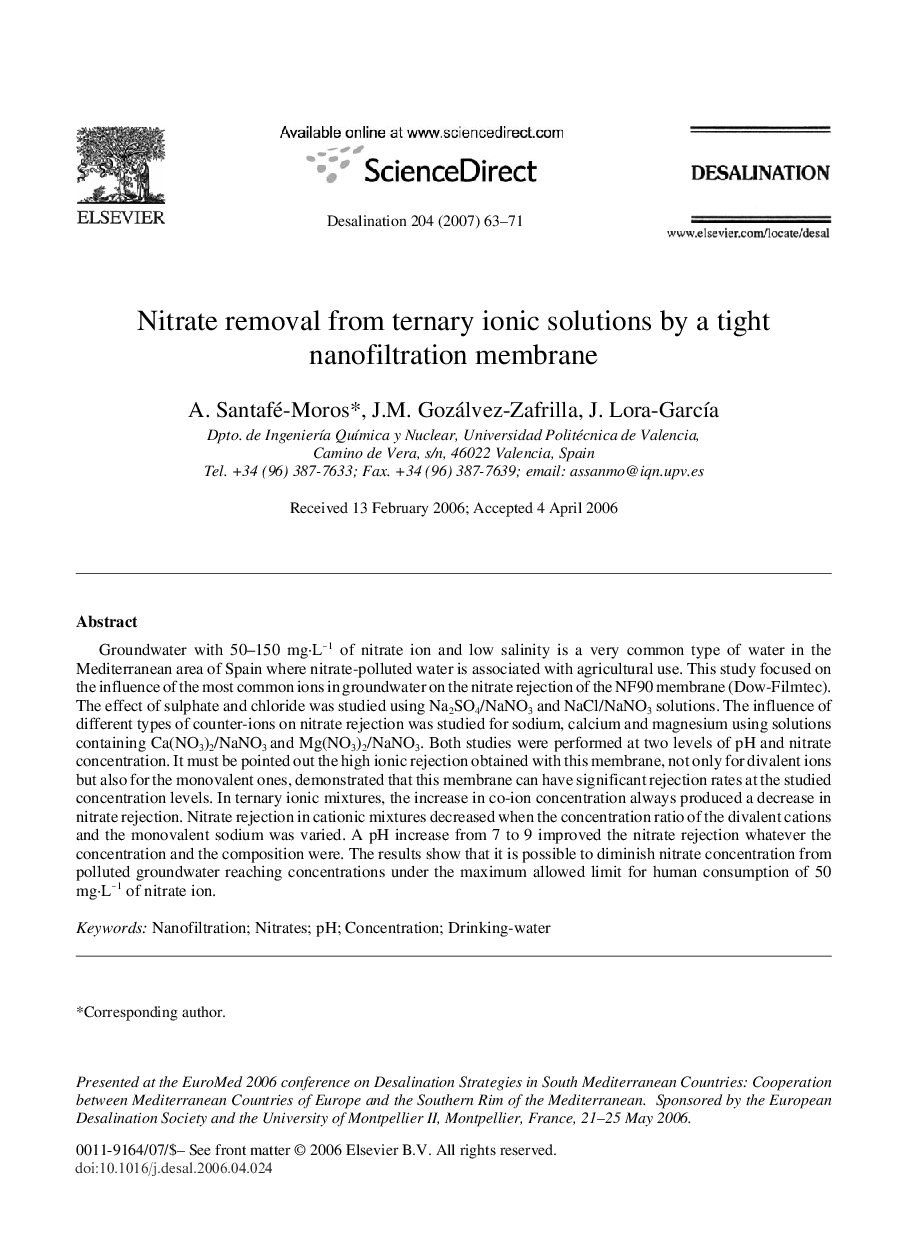| Article ID | Journal | Published Year | Pages | File Type |
|---|---|---|---|---|
| 628234 | Desalination | 2007 | 9 Pages |
Groundwater with 50–150 mg·L−1 of nitrate ion and low salinity is a very common type of water in the Mediterranean area of Spain where nitrate-polluted water is associated with agricultural use. This study focused on the influence of the most common ions in groundwater on the nitrate rejection of the NF90 membrane (Dow-Filmtec). The effect of sulphate and chloride was studied using Na2SO4/NaNO3 and NaCl/NaNO3 solutions. The influence of different types of counter-ions on nitrate rejection was studied for sodium, calcium and magnesium using solutions containing Ca(NO3)2/NaNO3 and Mg(NO3)2/NaNO3. Both studies were performed at two levels of pH and nitrate concentration. It must be pointed out the high ionic rejection obtained with this membrane, not only for divalent ions but also for the monovalent ones, demonstrated that this membrane can have significant rejection rates at the studied concentration levels. In ternary ionic mixtures, the increase in co-ion concentration always produced a decrease in nitrate rejection. Nitrate rejection in cationic mixtures decreased when the concentration ratio of the divalent cations and the monovalent sodium was varied. A pH increase from 7 to 9 improved the nitrate rejection whatever the concentration and the composition were. The results show that it is possible to diminish nitrate concentration from polluted groundwater reaching concentrations under the maximum allowed limit for human consumption of 50 mg·L−1 of nitrate ion.
